The Dominican Alps house the Caribbean’s highest summits and valleys. The sister peaks of Pico Duarte and La Pelona are home to pine trees.
Nightfall. The last strands of light are being squeezed away behind the mountain range in the distance, leaving a faded orange glow in the horizon. I hold my kerosene lamp up to the thermometer alongside the front door of the log cabin: 50°F
The ribs I’ve been barbecuing in the cabin’s front porch sizzle from the flames of a mix of burning wood and charcoal. With two glasses of wine, my girlfriend and I sit down at a small table on the porch, our breath now visible, as we admire the forming night sky with each star seemingly taking its position in turn. Blondie, my 40-pound, golden haired collie mix, lies at my feet, sniffing the meat soaked air.
The wind picks up with a whooshing sound as it passes through the pine trees, their silhouettes swaying in the twilight. Entering the cabin, I take off my paperboy hat and rummage through my bag for a more comfortable wool cap, also exchanging my t-shirt for a thermal shirt to go underneath my hooded sweat shirt. My kerosene lamp lights up the thermometer once more: 45°F.
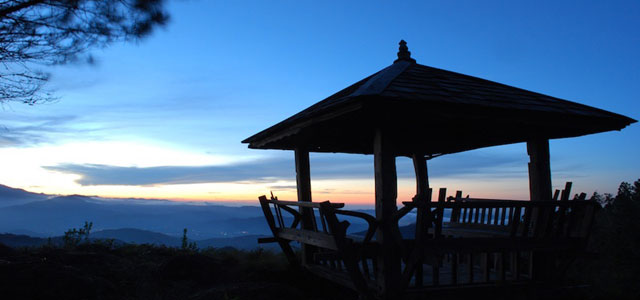 Valle Nuevo National Park
Valle Nuevo National Park
Inside the cabin den, I notice we’re out of firewood. The manly fire I had created, with great pride just hours before, has died down to a small reddish timber glowing in a pile of grey ash. My girlfriend and I wrap ourselves in a heavy winter blanket and curl up on a spacious, cozy couch close to the faded fire. Even Blondie cuddles up for warmth. Staring at the last fading strand of light, with only my nose and cheeks exposed to the cold air, I wonder how many people have experienced, or have even heard of – this frigid, tropical story.
Tonight, I am on one of the highest stages in the Caribbean. At 7,500 feet above sea level, Villa Pajón Eco-lodge in the Dominican Republicʼs Parque Nacional Valle Nuevo could not be further from the quintessential image of a Caribbean island: deep pine forests, mountain savannahs and temperatures that can dip below the freezing point.
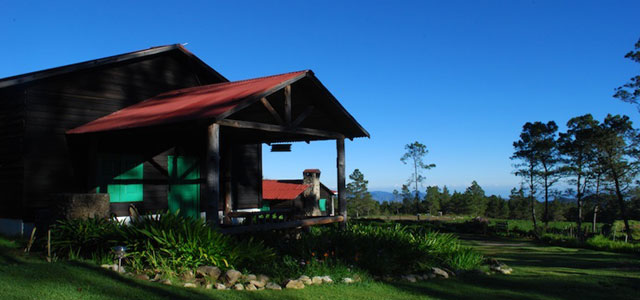 Villa Pajon
Villa Pajon
Seven log cabins, surrounded by beds of daisies with rustic hand-made furniture, serve as a refuge within the limits of the most important national park in the Dominican Republic. Valle Nuevo National Park, the highest alpine forest in the Caribbean, is also referred to as “The Mother of the Waters” because over 400 rivers are born from its fertile soils. If the Dominican Republic is your Caribbean escape, Villa Pajón is an escape within an escape. There is no internet. There is no cell phone service. There is no electricity. If you’ve arrived at Villa Pajón; congratulations; you’re officially “off the map”.
I came to Valle Nuevo in search of something no one expects to find in the Caribbean: frost. Yes, frost; those small frozen particles of water you probably know best from scraping them off your car window shield. Frost is a cruel reminder of what season it is, and where I grew up in North-eastern USA, you never look for frost; frost finds you; nearly every day of every Winter.
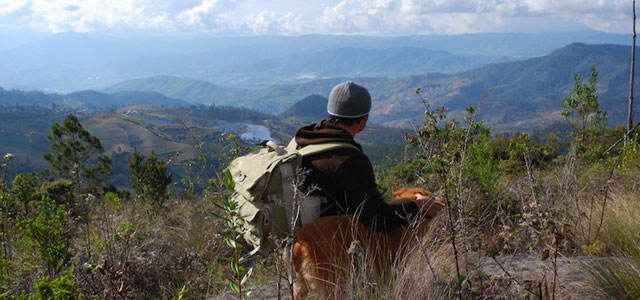 Pico Duarte
Pico Duarte
Five years ago, frost was one of the reasons I moved to the tropical shores of the Dominican Republic. I had had enough of Winter and I deeply felt that every human being had the inalienable right to go to the beach every day. It’s funny how life works though. After years of warm weather and three showers a day to combat the sweat and humidity, I felt a bit nostalgic for the frost. Maybe not so much the frost itself, but the sensations that comes with it: the cosiness of a thick sweater; the pleasure of steam rising to your face from a hot cup of tea; the warmth of a crackling chimney fire. In search of this “Caribbean Frost”, we packed a cooler of food (there is no electricity at Villa Pajón), warm clothing and plenty of wine and departed from our home on the eastern shores of the Dominican Republic, heading northeast to the country’s Central Mountain Range.
The “Dominican Alps”, as they are commonly called, house the Caribbean’s highest summits and valleys. The sister peaks of Pico Duarte (10,164ft ) and La Pelona (10,150ft), sabotage any stereotype you may have about the Caribbean. Go ahead; read that last sentence again; most people have to think for a bit. At these elevations, palm trees and coconuts are transformed to pine trees and blackberries. Then there is Valle Nuevo, “The Mother of the Waters”; she looks out to the Central Mountain Range’s highest reaching peaks, and from her veins drain the country’s lifeblood.
At around 3am, I was awoken by Blondie’s paw tapping my forehead. Dogs seem to have no concept of when someone is sleeping but, ironically, they do not enjoy being awoken themselves. We had all fallen asleep on the couch. I gently slipped out of the warmth of the covers and stumbled in the dark to find the matches to light my kerosene lamp. Stepping out to the cabin’s patio, I lit the thermometer with my lamp – my vaporous breath fogging the mercury reading: 37°F.
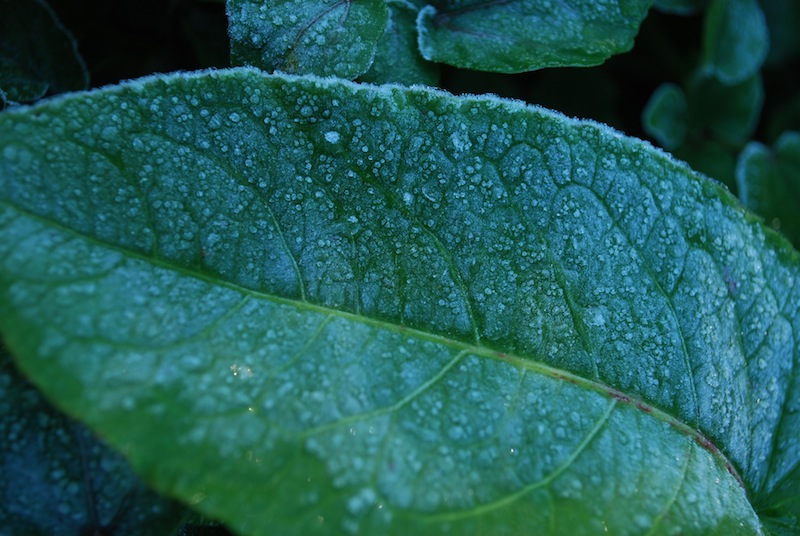 Pico Duarte Frost
Pico Duarte Frost
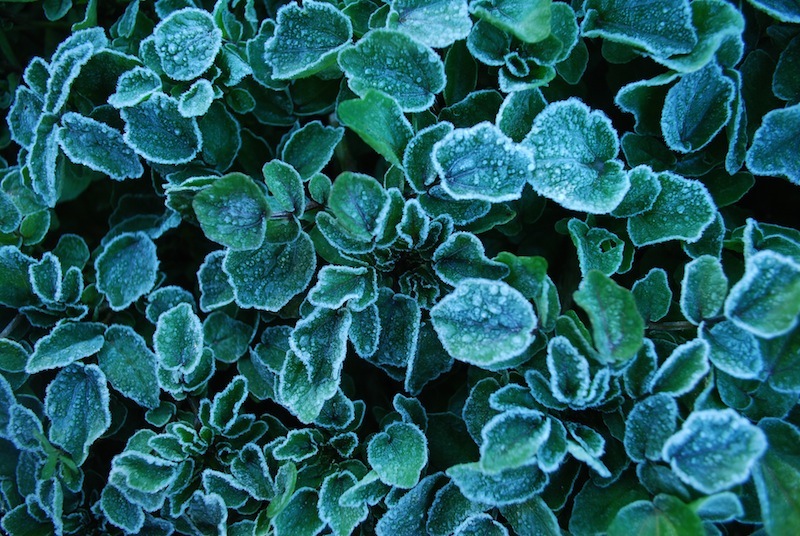 Villa Pajon Frost
Villa Pajon Frost
I scanned the grass with my lamp for any sign of frost but found nothing. As I looked out to the forest, what struck me most was not the cold crisp air or the mountain wind slicing through nearby valleys; what struck me most were the stars. It was a moonless night and the stars I had seen taking their positions, just hours before at nightfall, were now completely at home in an all-encompassing, planetarium-like sky that forced the mind to remember just how small we are in the grand scheme of things. I coaxed my girlfriend off the warm coach and into the cold night with the tall promise that she would see three shooting stars, subsequently, giving her three wishes. We lay on the cold, damp grass, wrapped in heavy blankets as we looked up into the night. My tall promise turned out to be small order for Valle Nuevo’s night sky. In about 30 minutes, we counted seven shooting stars; three wishes a piece and one for Blondie.
I awoke at about 6:30am. The rising sun was glowing through the distant mountain peaks and had already begun to shed its warming light on the cold grounds around our cabin. The temperature had even warmed a bit to 40°F. In the face of a rising sun and mercury line, I figured my desire to see Caribbean frost would have to wait for a future visit. I looked about the grounds but could see no frost.
Blondie began to sniff her way to the back of the cabin. I followed her, figuring I would enjoy the distant sunrise before returning to bed. Just behind our cabin, where the expanding sunlight had yet to encroach, the grass was not green, but white – its blades covered with frozen crystals. The white glaze spread several feet over grass, plant and flower. It was the first time in my life that frost brought a smile to my face.
Things to Do in Villa Pajon
Villa Pajon can coordinate a variety of activities during your stay. You can also visit any local attraction on your own, as they are all within driving distance. Some simple things to do would be blackberry picking, when in season, (Summer/Autumn) or hiking Villa Pajon’s forest trail to Parque Las Rocas (Rock Park). The light, hour long hike, to reach the park, passes a small watering hole called Poza del Jilguero, with cold, clear mountain water. The trail then terminates in the open savannah grasses of Parque las Rocas with numerous unusual rock outcroppings.
Other things to do in Valle Nuevo
Horse Back Riding: Villa Pajon will rent you incredibly tame horses that already know the walking route that takes you through the forest trail and into the nearby Parque las Rocas. Not much horse riding experience is needed and a guide will only accompany you if requested.
Salto Aguas Blancas: Salto Aguas Blancas is a torrential waterfall crashing to a natural pool of incredibly cold mountain water. At 150 meters, Aguas Blancas is the tallest waterfall in the Caribbean. If travelling on your own, it’s best to stop by Aguas Blancas after you check out of Villa Pajon since the waterfall is located towards the town of Constanza.
Las Pirámides: Constructed here in 1957, by order of former Dominican Dictator Rafael Leonidas Trujillo, Las Pirámides is a stone pyramid sliced into four sections, representing the four cardinal points. It also marks the exact center of the Dominican Republic.
Francisco Alberto Caamaño Deñó Memorial: The Dominican equivalent of Cuba’s Che Guevara, Caamaño was an ex-colonel in the Dominican army who lead a movement to overthrow then president Joaquín Balaguer. He was eventually captured and assassinated by order of President Balaguer. A small memorial is erected where he was shot.
Note: Only a vehicle with good clearance is recommended to visit Aguas Blancas, Las Pirámides and the Caamaño Memorial.
Things to Remember
There is no electricity at Villa Pajon so it is imperative to bring a large cooler with ice to store perishables. Although there is no electricity, each cabin is equipped with gas stoves and gas heated hot water for bathing. Villa Pajon will provide you with a list of items to bring but below is a short list of commonly forgotten items.
- Dominican pesos in small denomination (bills of 20, 50, 100) to purchase firewood or rent horses.
- Sponge to wash dishes
- Toilet paper
- Charcoal and lighter fluid
- Matches
- Flashlight
Getting To Villa Pajon and Valle Nuevo
For those who wish to have their trip to Villa Pajón coordinated, Caribbean Dream DMC, a Destination Management Company, coordinates “Relaxploration” packages that mix all-inclusive Punta Cana vacations with eco-adventures in the Dominican Republic. Please Contact Caribbean Dream for more information.
Photo Gallery Here